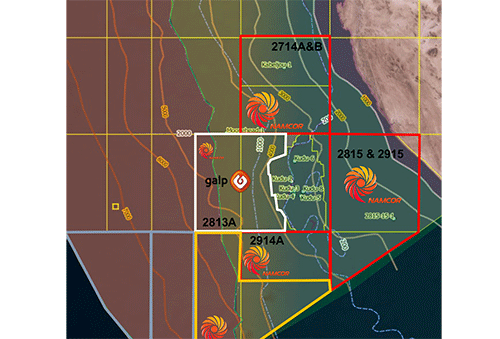A second confirmed discovery of oil off the Namibian coast has the potential to substantially impact the domestic economy for the better. This is according to Managing Director of the National Petroleum Corporation of Namibia (Namcor), Immanuel Mulunga, whose comments were made after Namcor
confirmed another major light oil and associated gas discovery, this time on the Venus-1X prospect, located in block 2913B (PEL 56) in the Orange Basin, offshore southern Namibia.
The confirmation followed Shell’s recent Graff-1 discovery in the same vicinity, although the volumes of oil and gas in the exploration areas have not yet been announced. The exploration area is operated by a joint venture group that includes TotalEnergies (40%), QatarEnergy (30%), Impact Oil and Gas (20%), and Namcor (10%). TotalEnergies is currently drilling another well, Venus, in a nearby block.
“Following the recent success of the Graff-1 well by Shell, this second light oil discovery by TotalEnergies has demonstrated the world-class potential of this new play in the deep water of the Orange Basin, which could be a major game-changer for Namibia’s economy and its people. We look forward to the upcoming appraisal programme to quantify the extent of this major discovery,” Mulunga noted in a statement. The Venus-1X discovery is located approximately 290 kilometres off the coast of Namibia, in the deep-water offshore exploration block. “The well was drilled to a total depth of 6 296 metres by the Maersk Voyager drillship and encountered a high-quality, light oil-bearing sandstone reservoir of Lower Cretaceous age,” read the Namcor statement.
Meanwhile, following the announcement of the first discovery by Shell, petroleum commissioner in the mines and energy ministry Maggy Shino recently told the Reuters news agency that Namibia aims to fast-track the development of the first oilfield to commence with production by 2026.
Said Shino: “If we do this within the next four years, that will be excellent for us. So, as the Namibian government, we have pledged our commitment to the joint venture team to walk hand-in-hand with them … to ensure we expedite the field development so that we can produce as quickly as possible”.
Last week, Shell announced that the exploration well off the coast of Namibia had shown ‘encouraging’ results with the presence of a working petroleum system with light oil. Shell’s Graff-1 well was drilled deep offshore in water of more than 5 000 metres.
Shell holds a 45% stake in Petroleum Exploration License 39 (PEL 39), where the well is located. Qatar Energy also holds a 45% interest, while Namcor holds the remaining 10%. For any discovery to be commercial in waters that are 3000 metres or deeper, it will have to be a significant resource. However, even if Venus-1 fails to find commercial volumes of oil, industry experts believe exploration activities in the Orange Basin are “about to explode”.
Industry gurus believe the promise of the Graff and Venus wells will likely trigger an increase in drilling activity in the Orange Basin as well as across the maritime boundary in South Africa, where TotalEnergies and Qatar Energy recently secured exploration approval.
During a meeting last month, mines and energy minister Tom Alweendo said discovering oil need not be a resource curse, also known as a paradox of plenty, for Namibia. The resource curse usually refers to the failure of resource-rich countries to benefit fully from their natural resources wealth, and for governments in these countries to respond effectively to public welfare needs.
“Once a discovery has been confirmed, we will have to discuss it judiciously for it not to be a resource curse,” said Alweendo. He also emphasised the need for an increase in local oil and gas industry skills to support any industrial activity, going forward.


